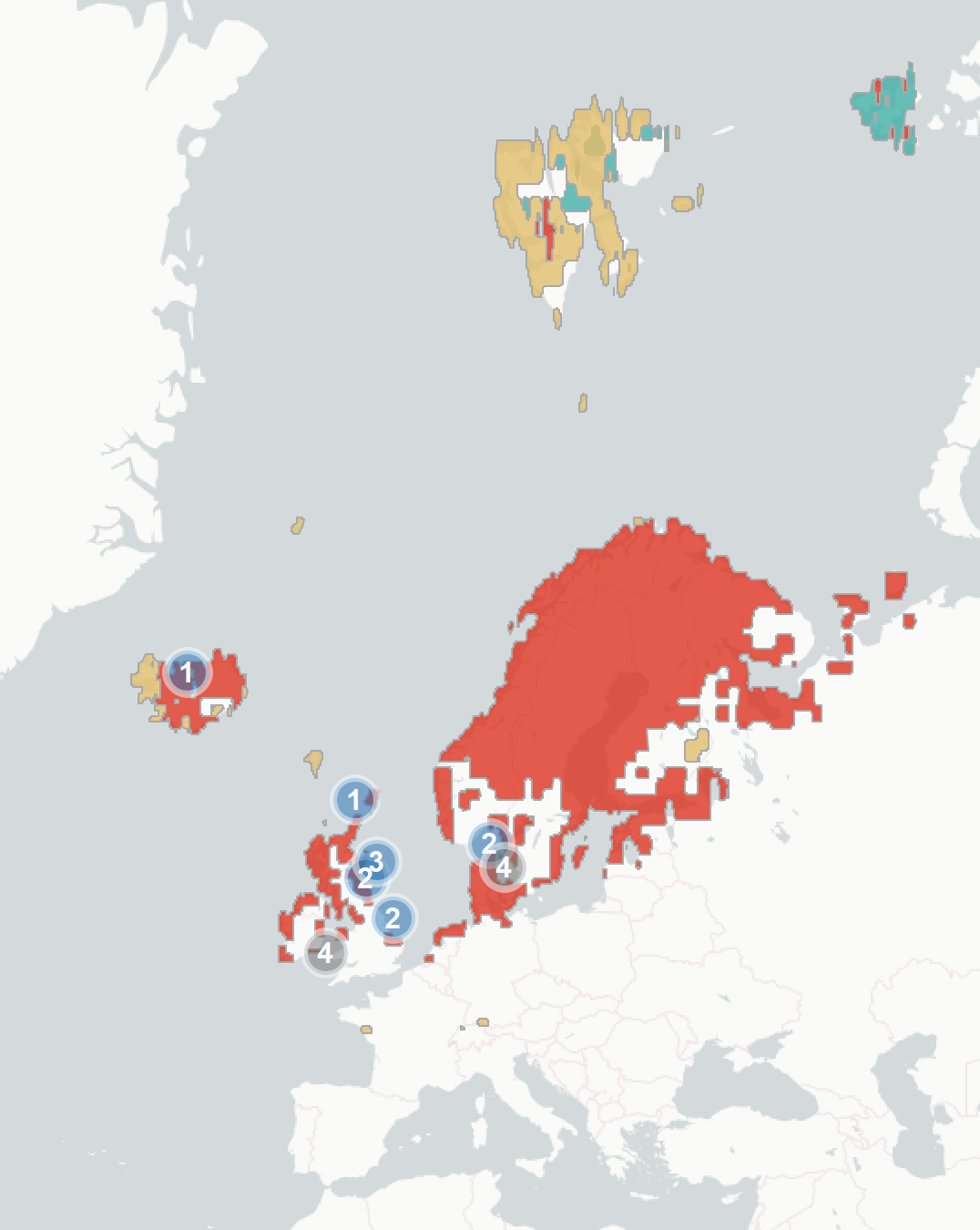Arctic Tern (Sterna paradisaea): vulnerability to climate change
Evidence for exposure
Potential changes in breeding habitat suitability:
-
Current breeding area that is likely to become less suitable (87% of current range)
-
Current breeding area that is likely to remain suitable (10%)
-
Current breeding area that is likely to become more suitable (3%)
Current impacts to Arctic Terns attributed to climate change:
-
Negative Impact: Changes in prey availability during the breeding season have led to population declines. Note: the contribution of climate change to this decline is still debated
-
Negative Impact: Changes in prey availability during the breeding season have led to population declines.
-
Neutral Impact: Arctic terns are arriving from migration and breeding earlier
-
Negative Impact: Higher sea temperatures correlate with lower breeding success. Mechanism unknown, but likely mediated through prey availability
Predicted changes in key prey species:
-
Key prey species are likely to decline in abundance in the Irish Sea and around North Denmark
Sensitivity
-
Around the north sea Arctic terns are very dependent on sandeels and highly sensitive to prey depletion. Lack of sandeels can cause mass breeding failures, and several have been observed in recent years. If climate change contributes to the decline of sandeels this is likely to have severe consequences on tern populations.
-
Arctic Terns are primarily surface feeders. If climate change results in prolonged stormy weather, or extended heatwaves drive prey species into deeper water, then it would likely result in Arctic terns struggling to forage effectively.
-
This species has a long generation length (>10 years), which may slow recovery from severe impacts and increases population extinction risk
Adaptive capacity
-
Dispersal between colonies in Denmark has steadily increased over the last 70 years, in correlation with changes in climate (notably temperature and precipitation). The exact mechanism is unknown, but high dispersal typically means more genetic flow and therefore resilience in the population
-
Arctic Terns can skip breeding when conditions are particularly poor. This is likely to be adaptive in the face of climate change as it conserves resources in poor years and maximises breeding success in good years
-
Arctic tern populations have a wide variation in migration strategy in terms of route and timing. This is likely to make populations more resilient as impacts to one part of the migration route are unlikely to have major impacts on the population as a whole.
-
Arctic terns likely have high site fidelity, particularly at stable colonies. There are few examples of establishing new colonies spontaneously. They are unlikely to shift their range quickly in response to climate change.
